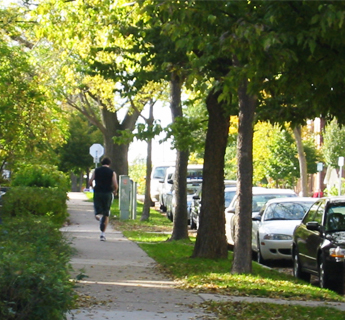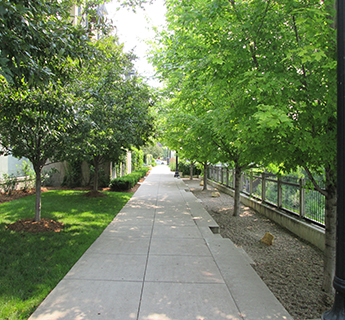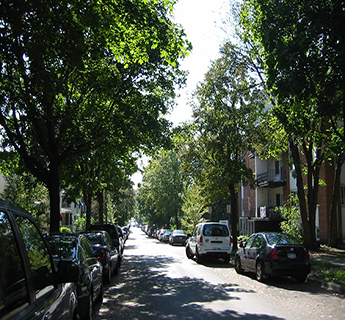Tree Canopy and Urban Forest: Improve the tree canopy and urban forest.



The tree canopy in Minneapolis is an asset for its aesthetic value as well as ecological and environmental benefits, as well as a particular source of pride and joy of Minneapolis residents. According to research done by the Minneapolis Park and Recreation Board, trees on public property save each Minneapolis taxpayer approximately $100 a year. Trees soak up rain water, meaning less runoff to rivers and creeks, which in turn results in cleaner drinking water, better wildlife habitat, and a healthier ecosystem. Trees on public property process 200 million gallons of water annually, resulting in a $5.9M savings in storm water management costs. They provide $5.8 million in energy savings through providing shade in summer to keep buildings cool, and blocking wind in winter to keep buildings warm. This savings is equivalent to the energy needs of 4,350 homes annually. Additionally, they absorb and hold 92 million pounds of carbon from the atmosphere each year. This is the equivalent of taking 8,936 cars off the road. They also remove the equivalent of 333,000 pounds of harmful particulates in the air, improving air quality. Street trees in particular also provide experiential, aesthetic, public health, and safety benefits to residents utilizing public walkways, while mitigating the urban heat island effect.
The ornamental and shade trees in the City's streets, alleys, public grounds and parklands are the responsibility of the Minneapolis Park and Recreation Board while trees on private property are the responsibility of the property owner. The City supports maintaining the health of all the city’s trees and increasing the city’s tree canopy to make Minneapolis a healthier place for all its residents.
 ACTION STEPS
ACTION STEPS
The City will seek to accomplish the following action steps to improve the tree canopy and urban forest.
- Develop and implement strategies and quantifiable goals to increase the tree canopy including exploring an expansion of funding and incentives to plant and promote species diversity while retaining and protecting existing trees.
- Provide education and training on tree care for all residents.
- Ensure a healthy tree planting environment in the right of way by increasing growing space, and maintain its quality by relocating utilities to avoid conflicts.
- Explore incentives, programs, and requirements for new developments and additions to existing buildings to retain mature trees, replace lost trees, and plant more trees if none were there originally.
- Require new developments to preserve existing mature trees in the public right of way where feasible and reasonable.

